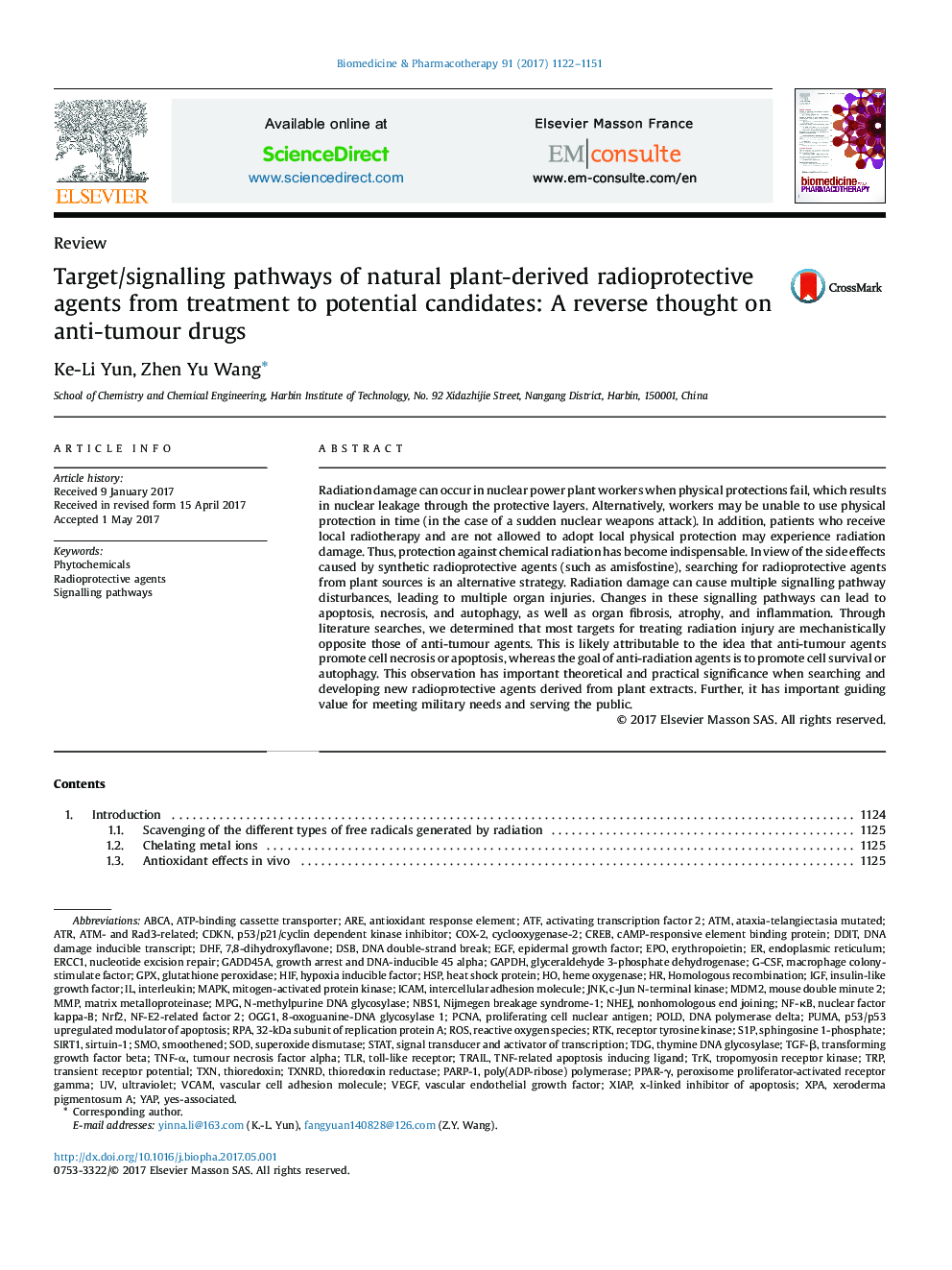| Article ID | Journal | Published Year | Pages | File Type |
|---|---|---|---|---|
| 5552911 | Biomedicine & Pharmacotherapy | 2017 | 30 Pages |
Radiation damage can occur in nuclear power plant workers when physical protections fail, which results in nuclear leakage through the protective layers. Alternatively, workers may be unable to use physical protection in time (in the case of a sudden nuclear weapons attack). In addition, patients who receive local radiotherapy and are not allowed to adopt local physical protection may experience radiation damage. Thus, protection against chemical radiation has become indispensable. In view of the side effects caused by synthetic radioprotective agents (such as amisfostine), searching for radioprotective agents from plant sources is an alternative strategy. Radiation damage can cause multiple signalling pathway disturbances, leading to multiple organ injuries. Changes in these signalling pathways can lead to apoptosis, necrosis, and autophagy, as well as organ fibrosis, atrophy, and inflammation. Through literature searches, we determined that most targets for treating radiation injury are mechanistically opposite those of anti-tumour agents. This is likely attributable to the idea that anti-tumour agents promote cell necrosis or apoptosis, whereas the goal of anti-radiation agents is to promote cell survival or autophagy. This observation has important theoretical and practical significance when searching and developing new radioprotective agents derived from plant extracts. Further, it has important guiding value for meeting military needs and serving the public.
